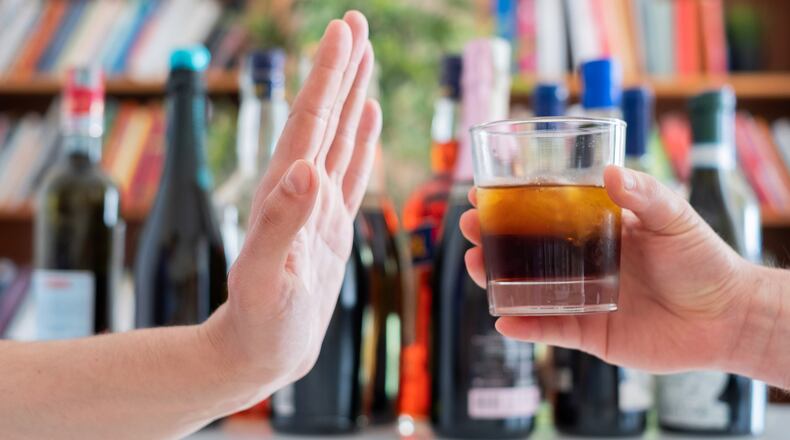This is the time of year when at least one, but sometimes several, of my friends avoid invitations to a boozy Sunday brunch or Friday happy hour. If they do partake in those activities, they may request a mocktail or seltzer while glancing occasionally at the glass, bottle or pitcher containing an alcoholic beverage which they cannot consume because they have gone “dry.”
Dry January, the month-long sobriety challenge that started about a decade ago in Europe, has reached the highest levels of participation in the U.S. in recent years, with more than half of all drinkers in the country (54%) trying to reduce their alcohol consumption, according to consumer insight platform Veylinx.
Last year, 35% of Americans participated in Dry January, according to data from food and beverage research company CGA. That is significantly higher than the 21% who participated in 2019 and likely much higher than the two years in between, when many Americans (but especially women and millennials) turned to alcohol as a COVID-19 coping strategy.
The sober-curious movement has largely been led by millennials who comprised the largest cohort of Dry January participants in 2022 at 27%, compared to 17% of Gen Xers and 13% of Baby Boomers.
Participants say Dry January is an opportunity for a health or mental reset. For others — the ones who aren’t counting down the 31 days until their next drink — it is a life reset.
“The objective of Dry January is not long-term sobriety — it’s long-term control,” said Richard Piper in a recent Washington Post story. Piper is CEO of Alcohol Change UK, the British nonprofit credited with starting the Dry January challenge. “It gives you the power of choice for the rest of the year,” Piper said.
Anyone who goes dry in January or September or October (all months that have been designated for sobriety challenges) may be seeking self-improvement for personal reasons, but in the U.S., alcohol consumption or abstinence has always been about both the individual and the collective.
Alcohol consumption in America has long been a means of expressing freedom, independence and equality, according to historian W.J. Rorabaugh, the first scholar to thoroughly study drinking patterns of the late 18th and early 19th centuries with a paper published in the Spring 1981 edition of the Journal of the Early Republic.
Americans drank more in the four decades from 1790 to 1830 than any other time since the nation’s founding, wrote Rorabaugh in 1979. Anxiety, he said, a result of rapid change in the country, led some Americans to drink excessively.
But after 1830, heavy drinking (and presumably American anxiety) had begun to subside. Younger Americans who were ready to let go of the past and embrace a new ethos of industrial growth and religious fundamentalism led the cultural shift away from excessive drinking, he noted. By 1850, half the population had stopped drinking entirely.
With the temperance movement in full swing, we soon hit Prohibition and society chugged along until it all came crashing down in 1933. Alcohol consumption quickly increased among the masses and once again we found ourselves trapped between what we thought our country could be and the reality of what it was.
In the past three years alone, we’ve managed to swing to both sides of the sobriety pendulum that has existed for centuries in this country — clinging to alcohol during the anxiety of the pandemic when reality came crashing down on us, and pushing it away in this period of cultural change and social reform.
Just as they did centuries ago, the younger generations are leading the way, whether they realize it or not.
“Consumption trends come in long waves that rise and fall — drinking was bound to come down at some point, and it was likely that younger generations would make that change,” said John Holmes, a British professor of alcohol policy, in a recent interview with the BBC.
I don’t know what new American ideals the younger generations will lead us toward in this time of great cultural change, but if Dry January is the tool that helps move us to a more clear-headed future, I’m all for it.
Read more on the Real Life blog (www.ajc.com/opinion/real-life-blog/) and find Nedra on Facebook (www.facebook.com/AJCRealLifeColumn) and Twitter (@nrhoneajc) or email her at nedra.rhone@ajc.com.
Sign up for the AJC Food and Dining Newsletter
Read more stories like this by liking Atlanta Restaurant Scene on Facebook, following @ATLDiningNews on Twitter and @ajcdining on Instagram.
About the Author
Keep Reading
The Latest
Featured



